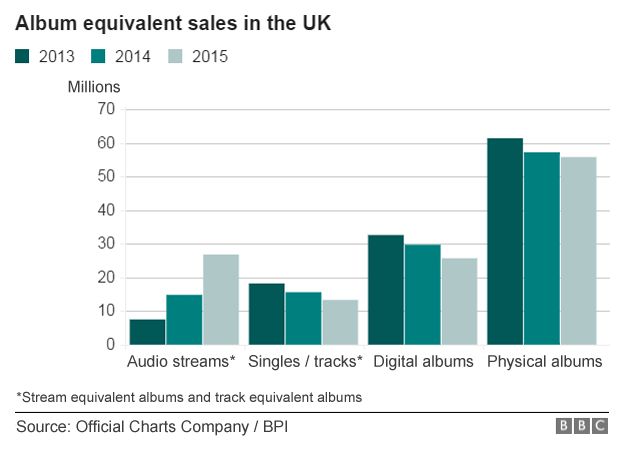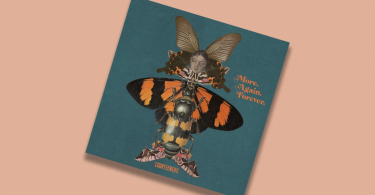From records, to tapes, to CDs, to downloads; the way we’ve consumed music has changed drastically over the last six decades. Streaming is the latest addition to this chain of music media consumption and its growing popularity is changing the shape of the industry just as its predecessors did.
Many of us are now users of Spotify, Last FM or Apple Music and on the rare occasion TIDAL. In the way that portable CD and MP3 devices and more recently downloads provided us with the ability to play music to ourselves where and when we wanted, streaming services have kept up with the changes in technology and streaming apps on phones and tablets are as popular as ever. They allow us to access almost any song that pops into our head at the touch of a button. In a world where everyone wants everything to be instantaneous, streaming is the perfect companion.
Increasing numbers of songs being streamed
In 2015 alone a total of 26.8 billion songs were streamed with OMI’s summer hit ‘Cheerleader’ being the most streamed track. On Spotify alone Major Lazer’s ‘Lean On’ reached 540 million streams between its release in March and the end of the year, however this was hugely out done by Justin Bieber who on one day alone in November 2015 reached 36 million streams. These figures shows just how much people are using streaming as a means of accessing music.
The British music industry has seen the benefits and effects of streaming services on a big scale. One of the major changes that has occurred is the Official UK Top 40 now taking into consideration streams of songs. In the way that in the early 2000’s downloads were taken into consideration due to their increasing popularity, the same has happened with streaming. From July 2014 every 100 streams of song were counted as the equivalent of one purchase of the track. Spotify, Last FM, Deezer alongside Napster and other paid for services are currently the being counted in the charts, as they grow who knows how many more could be added in the future.
Rise in vinyl sales
British artists themselves are seeing great popularity in the streaming world. In 2015 Ed Sheeran officially earned the title of most streamed artist gaining over 3 billion streams to date with over 59 million of those being gained in 2015 alone. Alongside this rise in streaming popularity there also seems to be a rise in interest in vinyl with sales jumping a massive 64%. This combined way of accessing music via old and new methods create a big boost to the British music industry with the overall retail value rising to £1.06bn, the first increase since 2004.
BPI chief Geoff Taylor said: “Yet again it’s UK artists who are driving this growth and inspiring the fans, whether it’s global icons such as Adele, Ed Sheeran, Sam Smith and One Direction, or recent British breakthroughs and newcomers like Jess Glynne, Little Mix and James Bay.”
Whilst there is a huge rise in the popularity and positive views towards streaming, it isn’t the case for everyone. One of the most notable cases is that of Taylor Swift and the removal of all her music from Spotify. According to Taylor the streaming industry had “shrunk the number of paid album sales drastically.” As the below graph shows, this is not the case.

It is understandable that some people may take streaming as a danger to album sales at face value. If people are accessing music for free, or for a very small cost, in the palm of their hand why would they want to then go out a buy an album when they can just pick and choose which tracks they listen to at the click of a button? However the album doesn’t seem to be going anywhere for now.
Whilst some may oppose streaming as a way of accessing music it is undeniable that it is ever increasing in popularity and becoming one of the fastest ways to access music. With album sales still hitting the big figures, Adele’s 25 sold just under 2.5 million in 6 weeks in the UK alone with Ed Sheeran coming in close at 2.66 million in its lifetime as of January 2016, it is clear that people are still looking to own music and not just streaming single tracks as and when the feel like it. Though streaming figures are high and proving its success it would be fair to say that music consumption is still multi-platform and providing people with options to suit their own personal needs.
What are your thoughts on streaming music? How do you access music in 2016? Let us know in the comments below!









